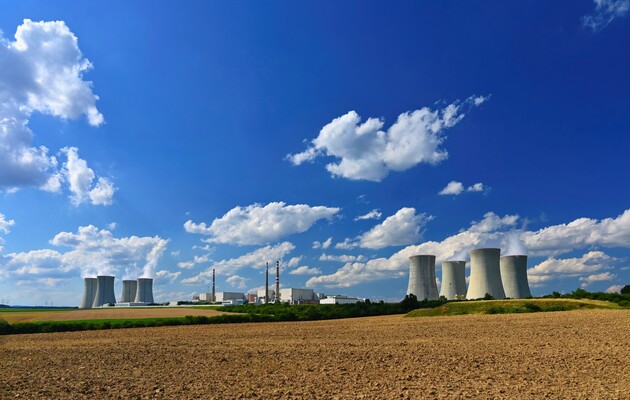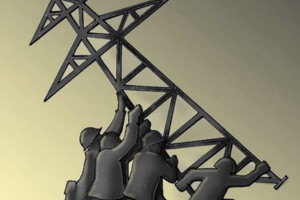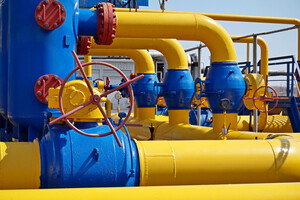Energoatom: in search of a partner for serious relations
In February, the perennial show with the corporatization of National Nuclear Energy Generating Company Energoatom, which began under Yanukovych, came to an end. Still, at that time, the second stage was supposed to be further plunder of the flows of the new company, with sharing the crops with the right people. Nowadays, everything is more prosaic: corporatization is one of the beacons for financing support of the country by the International Monetary Fund. And in general, it’s all the same for energy... There is neither particular benefit, nor harm for it; and from afar it resembles the usual practices for the West.
Energoatom itself (before the first reading in the parliament) made up a presentation that “the corporate structure of Energoatom, which is usual for large investors, will attract tens of billions of dollars” in the announced (as of the 2022 summer) new projects. The phrase was completely ritualistic, and the projects mentioned between the first and second readings were safely cut to a more conventional level. Both in terms of quantity and timing...
Instead of the mythical projects of construction of nine new power units, and the first one was promised to be finished literally in four to five years, the plan adopted by the Cabinet of Ministers currently includes only two or three new reactors. The terms have also become more realistic – now they are fixed for 2030–2032. There is an understandable reservation: the course of hostilities may affect the terms.
Nine blocks (initially there were five) are the result of the National Nuclear Energy Generating Company management’s ardent desire to bail out its strategic partner, the Westinghouse company, and buy from it (actually) illiquid assets.
In the 2010s, the American company Westinghouse began building four nuclear units in the United States. They failed to organize the process properly; as a result, the construction was extremely delayed and became many times more expensive. Two nuclear units were canceled altogether, the company itself was on the verge of bankruptcy and changed shareholders (a Canadian investment company instead of Japanese Toshiba).
Under the terms of the debt settlement, Westinghouse had an obligation to sell the unused equipment for the two reactors, which became unnecessary in the United States, by the end of 2024, however, no buyers were found. The National Nuclear Energy Generating Company helmsmen actually volunteered to help.
Meanwhile, it was not presentable to clearly voice that the purchased equipment worth two to three billion dollars would simply be kept in a warehouse for a dozen years. Hence there was an announcement of plans that we are about to put the unit into operation, and we need to purchase it urgently. Papers will tolerate anything.
Still, we saw a nuance here. The buyer had no money, and Western banks were never impressed by such statements – there were no people willing to credit such a strange deal. As a result, the Cabinet of Ministers of Ukraine also rejected the idea.
In an ideal world of fantasy (or interested managers of National Nuclear Energy Generating Company), the equipment can of course be bought. But only with a very big discount. Excuse me, guys, we have a war and there is no extra money even for such nice dudes as you. Energoatom is up to its ears in obligations to subsidize tariffs for the population, and the new units will cause a significant increase in its tariff.
At Westinghouse, everything is also difficult with finances. Last year, the company again sold half of the shares and changed part of the shareholders (actually, the deal has not yet been completed). So, it doesn’t feel like making discounts.
The very project of putting in operation even two or three new units is a very serious challenge that will require solving the most difficult tasks (even without considering the war). In the United States, for example, it was not possible to build quickly and inexpensively and start the process of almost conveyor construction, although China managed to finish such a project on the same blocks of American design.
We also aren’t living in 2003, when the Soviet construction base at the NPP still remained, which made it possible to complete the blocks at the Khmelnytskyi and Rivne plants in 2004, and earlier — at the Zaporizhzhia plant.
Those enterprises, unfortunately, were destroyed or collapsed a long time ago. Many things will have to be started from scratch. But first and foremost, we are to win the war. However, the time to start preparing is now. Westinghouse has recently won a tender in Poland, where construction begins in 2026 (putting of the object in operation is scheduled for 2032). This is also our chance to practice. Still, a detailed analysis of the reasons for the failure of the construction program in the USA would not be superfluous, at least to understand what exactly should be eliminated. We don’t have time for repeated mistakes. As well as money for a two- or three-fold increase in the price of projects.
Westinghouse has been our strategic partner for many decades, and it is worth setting the right tone right away. It should be a partnership, and not persuading aborigines to buy illiquid stuff.
Generally, there will be enough opportunities. Before the war, the project to increase the power of the reactors was progressing successfully. Currently by 1.5–2% (with a possible increase to 5–7%). Of the 13 million reactors, six have already been switched to American fuel. The process of transition to it has begun at yet another unit at the Rivne NPP. The war made the issue of fuel a key one, because, obviously, supplies of Russian oil stopped immediately (the last supply arrived in the town of Varash for the Rivne NPP just two or three days before the war).
There is no disaster in the transition to American fuel. Its latest modification has worked quite successfully at the NPP for ten years already. In addition, the stations have reserves for large reactors for two or three years, and the capabilities of the Swedish Westinghouse plant fully provide for producing fuel for our reactors, as well as for Bulgarian and Czech reactors. That is, already in 2024-2025, not Russian, but Swedish-American fuel will be imported to Western Ukrainian nuclear power plants.
Of course, it will not be easy. For example, the Americans previously refused to supply fuel to the first unit of the South Ukraine Nuclear Power Plant (there are differences in the design). One PWR–1000 (ВВЕР–1000) reactor produces 6–7 billion kWh per year covering the consumption of several regions. We will have to think about how to solve the problem without compromising security.
By the way, at the Zaporizhzhia NPP, the ruscists have seized fuel supplies from Westinghouse for four of its units. There is information that they took part of the fuel cartridges to Russia for unauthorized study.
There is also a more difficult question: how to swiftly replace the fuel in two small units of the Rivne NPP (PWR–440). Currently, the fuel for them is produced by a single plant in the Moscow region – on the entire globe... In the zero years, there was a really successful attempt to produce such fuel for the Finnish nuclear power plant, first in Britain, then in Spain. The Russians then got upset, modernized their fuel, dropped the price and... pushed a possible competitor out of the market. The Spanish dismantled the production line, but the competences and drawings remained. Therefore, it is possible to establish such production in two or three years.
Of course, for the sake of squeaky-clean Ukrainians no one would really lift a finger. But, fortunately, the market for PWR fuel is much larger. In Europe, in addition to ours, there are currently 15 reactors of the PWR type (in Slovakia, one has just been put into operation, another one is on its way). And 18 reactors are a much more appealing share of the market than two or three in Rivne. For us, this option has no alternative. And there are two, maximum two and a half years left – that’s how much fuel we have in stock for the “440s.”
During this time, Europe will have to resume the production of nuclear fuel of this type, and we will have to license it. No one will let you put fuel into the reactor just like that – it’s a matter of safety.
But the plans announced by Energoatom regarding the construction of a nuclear fuel plant in our country are a bit vague.
In December, Energoatom was appointed as the operator of the planned installation for the production of heat-releasing assemblies (HEAs) for PWR–440, and the roadmap for the construction of the technological complex was agreed upon. The head of National Nuclear Energy Generating Company Petro Kotin said: “We already produce heads and shanks of fuel cartridges, which have been licensed by an American company. That is, we will produce half of it ourselves, and the other half will be supplied by Westinghouse.” Journalists were even welcomed at the South Ukraine NPP to show parts of the equipment. To what extent it was worth doing during the war at a station over which the track of enemy caliber missiles passes –is a question.
In general, partial assembly is discussed. There will be no full production cycle. It was promised by the Russians in 2012. Purely “accidentally” at the same time, they wanted to fix the release of a cassette that was completely incompatible with the American one. That is, the lion’s share of the market (at least 10 out of 13–15 PWR–1000 reactors) was concreted forever. But the idea didn’t work out.
Now the plans are more modest and certainly more realistic, but, in my humble opinion, for now it is better to make less noise. All these are plans for after the war. And there is a lot of work ahead. The same Westinghouse company is unlikely to be very excited about the idea that fewer ready-made cassettes will be bought from it. A complete heat-separating assembly with fuel is worth more than a million dollars.
However, for us, the issue is not the price, but availability. The war year has already passed. About two are left before the transition to new fuel. Not much. And the fewer mistakes we make, the better. The idea is simple, but if we forget about it, the price will be too high.
Read this article in russian and Ukrainian.
Please select it with the mouse and press Ctrl+Enter or Submit a bug














 Login with Google
Login with Google